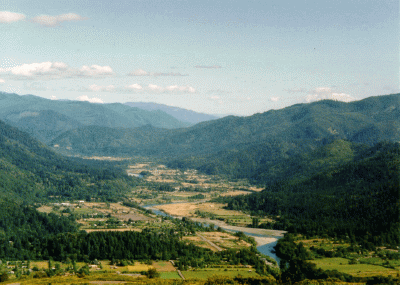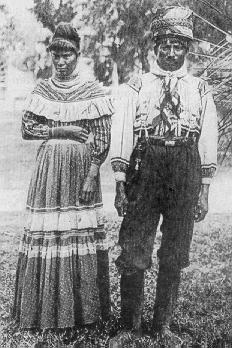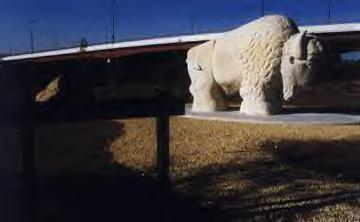|
|
Canku Ota |
|
|
(Many Paths) |
||
|
An Online Newsletter Celebrating Native America |
||
|
May 5, 2001 - Issue 35 |
||
|
|
||
|
This Date In |
||
|
North American Indian History |
||
|
from On This Date in North American Indian History at http://americanindian.net |
||
| Apr. 21, 1864: | Based on the Congressional Act of April 8, 1864, Austin Wiley, Superintendent of Indian Affairs for the state of California, proclaims the proposed establishment of the Hoopa Valley reserve, on the Trinity River. Located in Klamath County, California, settlers are advised not to make further improvements to their properties, or to move into the area. This proposal will require Presidential approval. |
|
|
|
| Apr. 22, 1889: | The Oklahoma land rush begins. |
| Apr. 23, 1897: | Congress created the Dawes Commission in 1893. One of its primary duties was to bring about to the break up of the reservations in Indian Territory. The method would be to allot individual tribal members a certain amount of land each. The remaining lands would be opened up to white settlers. Today, the commission will reach an agreement with the CHOCTAWs, and the CHICKASAWs to these ends. |
| Apr. 24, 1971: | Today is the end of a three day Tribal Chairman's conference in Pierre, South Dakota. Eighteen leaders from the National Tribal Chairman's Association meet to assure representation for all federally recognized tribes with, and without reservations. |
| Apr. 25, 1839: | Today, former slave to the SEMINOLE, and later freed and elevated to "Sense Bearer" or Counselor, Abraham and his family will be shipped to Oklahoma. During his lifetime, he will be an interpreter and a warrior. He would also influence other negroes to flee from their owners and to join the growing band of black SEMINOLEs. |
|
|
|
| Apr. 26, 1943: | In 1905, the SHOSHONE and ARAPAHO Indians of the Wind River Reservation, in Wyoming, ceded a large section of their reservation to the United States. According to Federal Register number 8fr06857, today they will get a small part of that land back. |
| Apr. 27, 1763: | Today, Pontiac will hold a council with a large group of OTTAWA, WYNADOT, and POTAWATOMI Indians. He will tell them of his plans to attack Fort Detroit. He will extol the virtues of returning to the old Indian ways, before the coming of the Europeans. |
| Apr. 28, 1835: | The U.S.government issues orders to stop certifying CREEK land sales. After a year of receiving complaints from CREEKs, and honest whites, the Government also agrees to investigate fraud in previous sales. Numerous scams have developed to get CREEK land. Indians will be paid to represent another Indian in a land sell, or they will be made drunk, and tricked into signing papers. These are just 2 of the many schemes going on. |
| Apr. 29, 1868: | Twenty-five BRULE SIOUX will sign the treaty at Fort Laramie, today in eastern Montana. Many other Indians will sign it later in the year. The SIOUX Standing Rock Reservation will be established by the treaty. It will cover 4,176 square miles and be occupied by "BLACKFEET, HUNKPAPA, LOWER and UPPER YANKTONAI SIOUX" in Dakota Territory. |
| Apr. 30, 1682: | La Salle stays with the TAENSA Indians for 4 days, starting today, on Lake Saint Joseph in Louisiana. He will sign a peace treaty with them. |
| May 1, 1540: | Today, de Soto's expedition reaches the river across from the village of Cofitachequi. Among the high Chiefs who are rowed across the river to meet de Soto, is the "Lady of Cofitachequi". She would be carried on a litter. The "lady" would speak with de Soto, and give him a string of pearls. Eventually, de Soto's men would "liberate" approximately 200 pounds of pearls from a temple in the town. It is believed this village was near present day Silver Bluff, South Carolina. |
| May 2, 1867: | The treaty of February 19, 1867 with the SISSETON and the WAHPETON SIOUX will be publically proclaimed, today. |
| May 3, 1903: | Today, armed federal troops will force the CUPENO group of Indians to relocate from Warners Hot Springs to the Pala Reservation in northern San Diego County, California. The CUPENOs were only allowed to take what they could personally carry on the 3 day trip through the mountains. Many lost most of their possessions. Several of the CUPENOs were able to escape and joined other Indians at other reservations in the area. |
|
|
|
| May 4, 1863: | After the Minnesota uprising of the SANTEE SIOUX, and their subsequent defeat, their lands were forfeited. The surviving Indians, including those who had opposed the uprising and helped the whites, were ordered to be shipped to a reservation in Dakota Territory. On this date, 770 SANTEE SIOUX boarded a steamboat in St. Paul for the journey west. Eventually 1,300 SANTEE SIOUX will be transported to an area which would hardly support life. During the first year, 300 SANTEE would die. |




